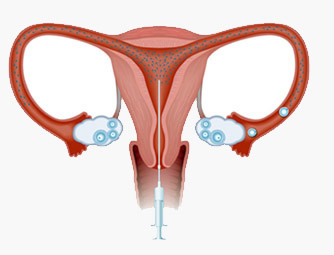ARTIFICIAL INSEMINATION
Artificial Insemination Intrauterine Insemination, also known as Artificial Insemination, is a technique where motile sperm are transferred to the womb. Unlike pregnancy by intercourse, Artificial Insemination increases the possibilities of pregnancy since it helps the sperm get closer to the egg, having more chances of fertilization (Artificial Insemination).

Count: More than 20 million per ml.
Mobility: More than 50% of sperms
Morphology: 14% of Kruger Criteria, 30% OMS Criteria.
Semen Process: There are 2 methods by which out samples are processed:
Swim Up Method: Consists in placing the semen in a conical tube, over the semen cultivation means are added, these means should be added carefully and slowly so they don’t mix with the semen. The tube is warmed between 37 and 45 degrees Celsius for approximately 30 minutes. During this time, sperm with good mobility will be able to swim through the cultivation means, while those with no mobility will stay in the semen. Then only the cultivation means is taken, having then, only sperm with good mobility.
Gradient Method: This technique is widely used for patients having some viral or bacterial disease but want to have their baby, like patients with HIV, Hepatitis C, etc. In this technique gradients with different concentrations are used that help us form barriers for sperm making sure these barriers are only crossed by sperm with good mobility, while those with no mobility or bad form or even virus or bacteria will get caught in one of those gradients.


